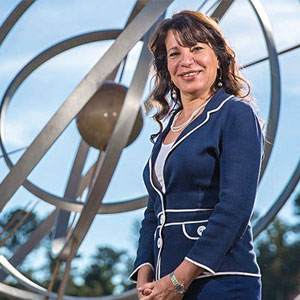THANK YOU FOR SUBSCRIBING

Digital Procurement Transformation in Supply Chain Management
Paul Blake, Associate Director, GEP Worldwide


Paul Blake, Associate Director, GEP Worldwide
In 1996, I was in Egypt on a tour organized by archaeologists. We toured tombs and temples, palaces, and pyramids. Amongst the tourists, there was a range of opinions on how such wonders had been constructed.
There were certain hypotheses concerning extra-terrestrials and more mainstream theories concerning vast armies of slaves. The modern, developed-nation mind has difficulty, it seems conceiving how such scale, precision, and grandeur could be possible without even the basest of base technologies, iron tools.
In our technological age, the only way we imagine solving complex problems is through the application of complex tools. But as our archaeologists pointed out, when you don’t have advanced technology, what you need to achieve great things is advanced society.
It turns out that even without lasers and horsepower, many high-skilled artisans, working in highly-coordinated close collaboration could, quite literally, move mountains.
Today, constructing a stone pyramid would be monumentally expensive, require vast resources to plan and might require the development of completely new equipments, and new tools. Why? Because in the modern world, our current technology toolset defines the limits of what we can achieve—indeed, what we can imagine we can achieve.
Simply put, because we don’t build pyramids, we can’t build pyramids.
In our lifetime, technology’s impact on workplace productivity has been immense. We have more intelligence, connection, and power to execute than our grandparents could have imagined.
The idea that technology drives performance improvement is now ingrained in our thinking. So much so that the default answers to any shortfall in output is to deploy some new software. In fact, the software industry has a word it uses as the ultimate euphemism for “product” —solution.
And euphemism it is, because the tool is never the solution. Swapping a bronze chisel for a jackhammer is not a solution if you want to build a pyramid.
At GEP, our area of expertise is procurement and supply chain, and for two decades we have seen at first hand the positive impact technology has had on procurement’s ability to drive real bottom-line results to the business.
In recent years, however, chief procurement officers have come under increasing pressure to deliver more, with less, at higher frequency. Bigger savings, lower risk, quicker turn around, and higher efficiency are the order of the day. Procurement transformation is today’s goal.
The challenge for many CPOs is that there is a limit to how much cost-reduction can be squeezed from mature commodity categories. There are limits to how quickly requisitions can be raised, approved, and submitted to suppliers.
To re-imagine what is possible, without the limits that the status-quo imposes, and to work out how best to use our intellect and creativity
Those limits can seem fundamental.
Codified process steps can start to seem like rocks on the road. How are we to achieve more with less when the machinery is already running at max?
What is clear, when we look closely at people, process, and technology is that it isn’t the process that’s to blame— that can change. And, by and large, people aren’t resistant to being more productive and effective. Indeed, what we often hear is, “we’d like to be able to deliver more, but everything takes so long.”
It couldn’t be the tech…could it?
Could it be that the technology we are using is imposing a brake on our ability to grow and transform?
It is not unusual, in 2018, for sourcing, contracting, and purchasing processes to be dominated by the three pillars of workplace technology: email, documents, and standalone applications.
The basic process of procurement, called source-to-pay, comprises a series of process steps all of which need to interoperate with a continual flow of data and intent from the identification of an initial opportunity, to its successful realization.
Technology has helped in the past, at every step of the process, but not in the chasms in between.
A prime example is what happens to a contract resulting from a proposal, which has been commissioned to exploit an opportunity.
In many cases the contract is signed, physically filed away and… that’s that.
Which is a problem. If no one knows about the contract, how is the value it represents ever to be realized? Time and again, we see potential value evaporating, despite the good deal negotiated by procurement.
It all comes down to breaks in the data chain. As a result, CPOs struggle to deliver against targets.
Enter Digital Procurement Transformation.
If existing tools and practices block transformation, innovative new technology could hold the key to its attainment.
By taking a step back and looking at the procurement processes as a whole system, rather than as disconnected activities, we have been able to develop software that now deals as much with the connection between process steps, as the steps themselves.
Facilitating the flow of data, from opportunity to realization, is how to break through the productivity barrier.
AI and automation capabilities, voice and chatbot interfaces, and advanced decision support are all adding dimension to this unified platform.
The digital procurement workplace will not be a suite of modules or applications, however featured-rich, but a single unified platform in which procurement, the C-suite, end-user buyers, and suppliers will interact, collaborate, and participate in a more fluid, rapid, and efficient manner.
And participation is the real solution. What digital transformation should do is not replace people in the extant process, but free human resources to focus on new sources of value, redirecting human brains from admin to innovation, with an entirely new process.
We need to think big. To re-imagine what is possible, without the limits that the status-quo imposes, and to work out how best to use our intellect and creativity.
After all, the ancients showed us that if we’re not bound by the limits of technology, we can work together to achieve monumental results.
The late, great Grace Hopper, pioneer of the software industry was spot-on when she said, “the most dangerous phrase in the language is we’ve always done it this way.”
Check Out: Top Supply Chain Management Solution Companies











